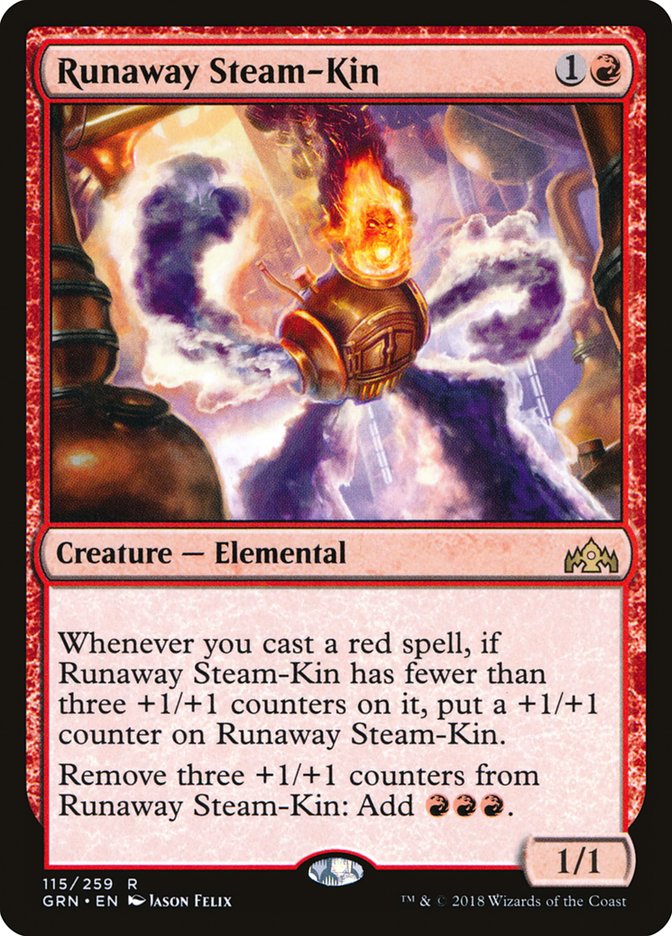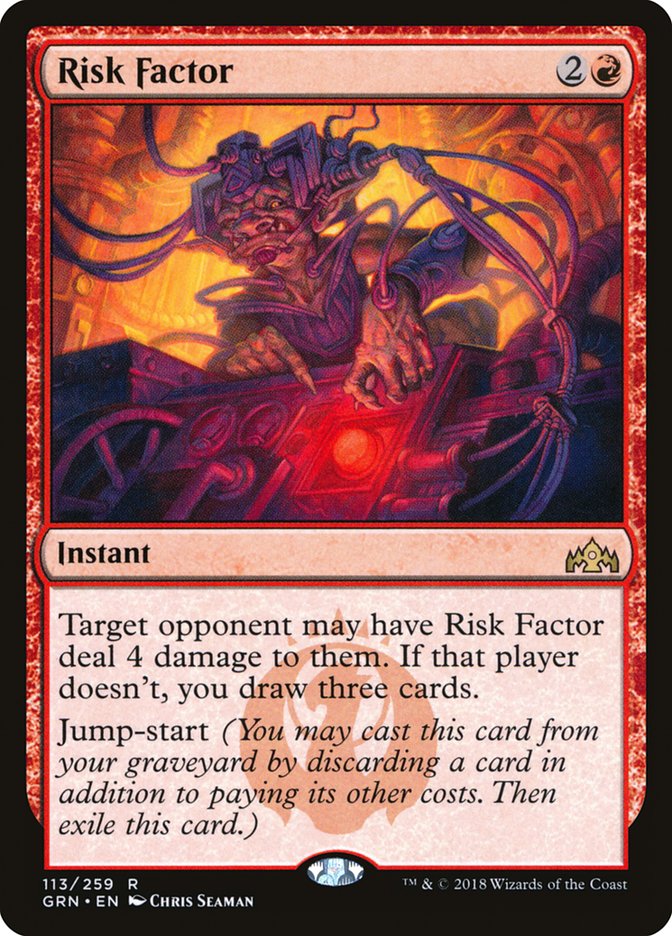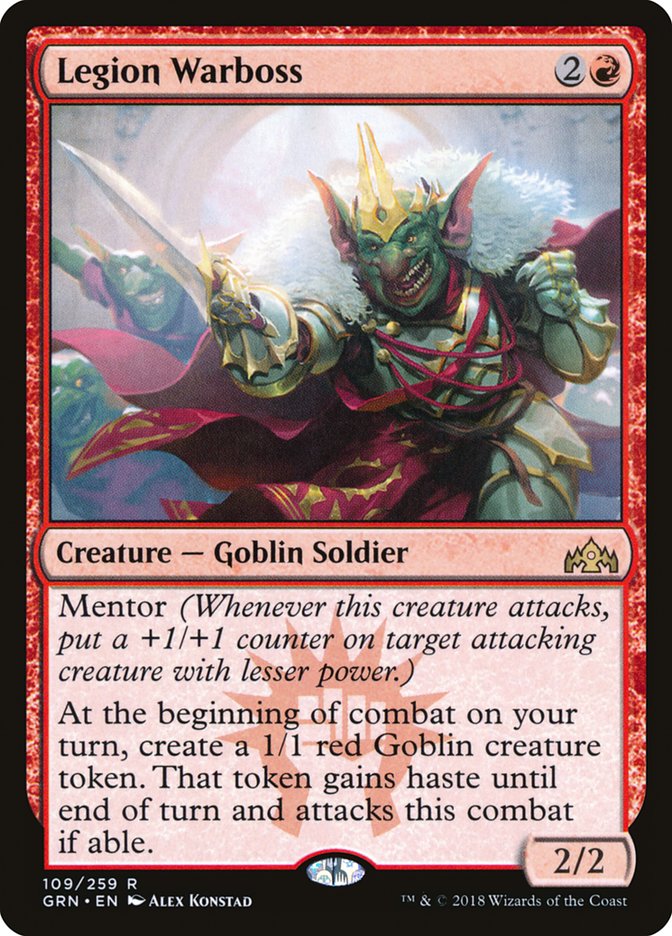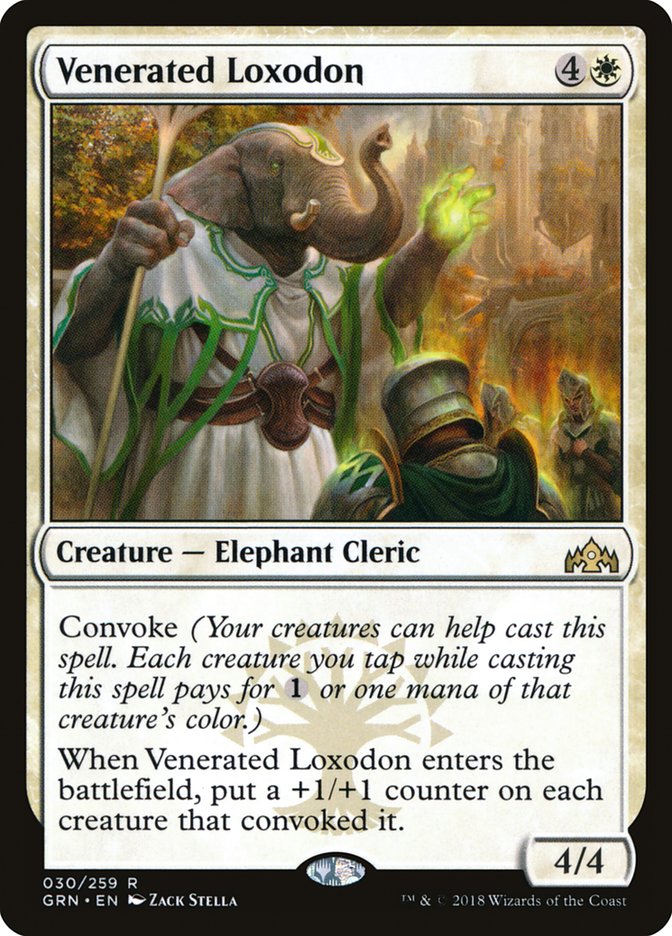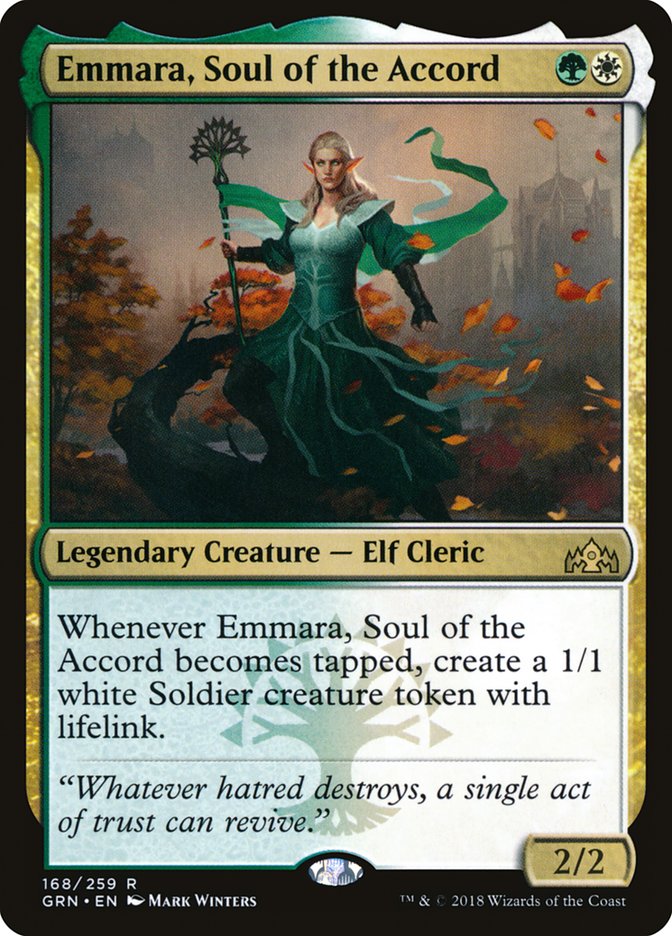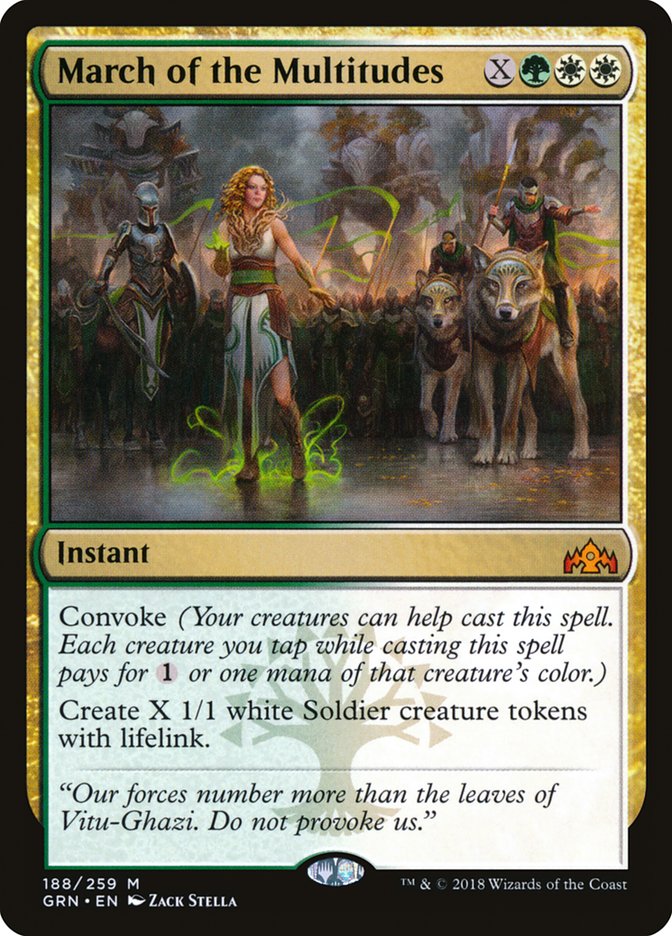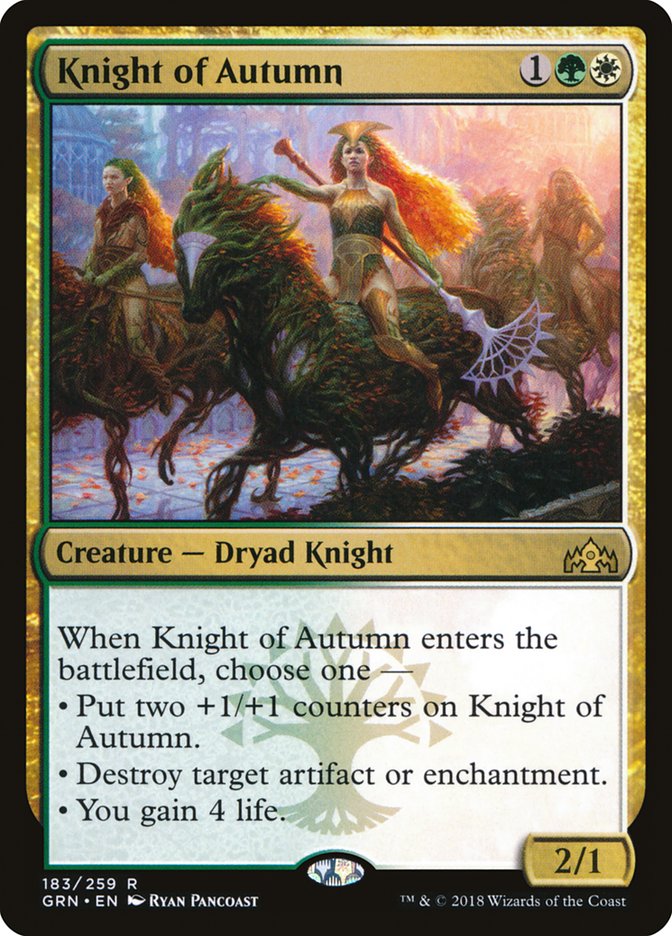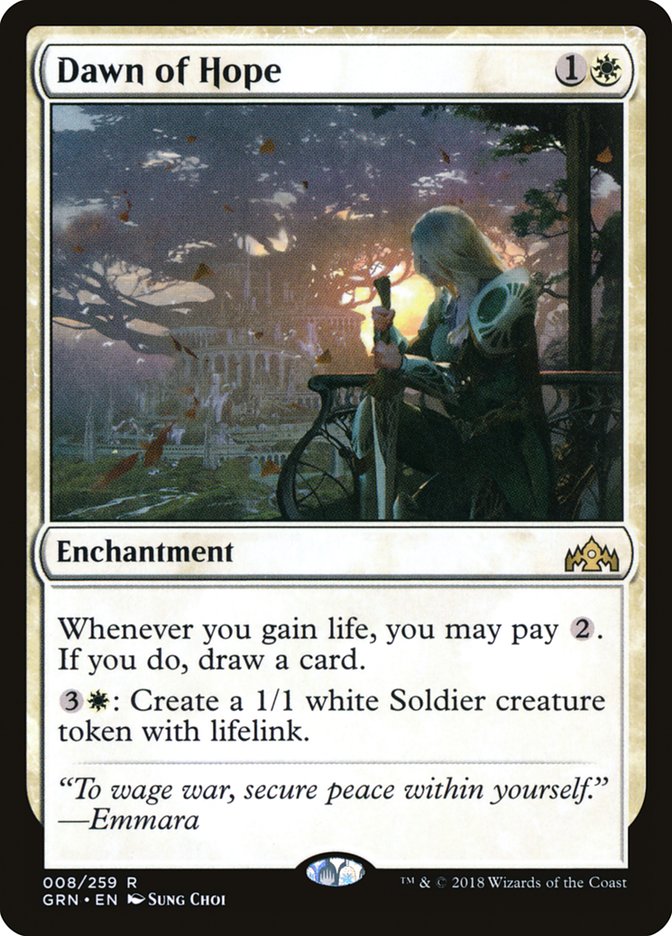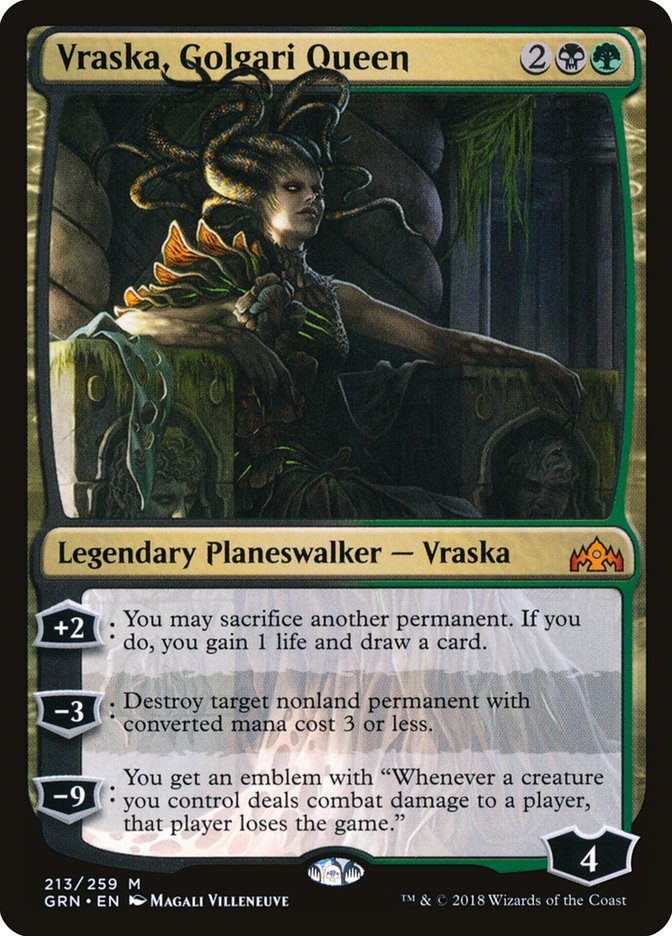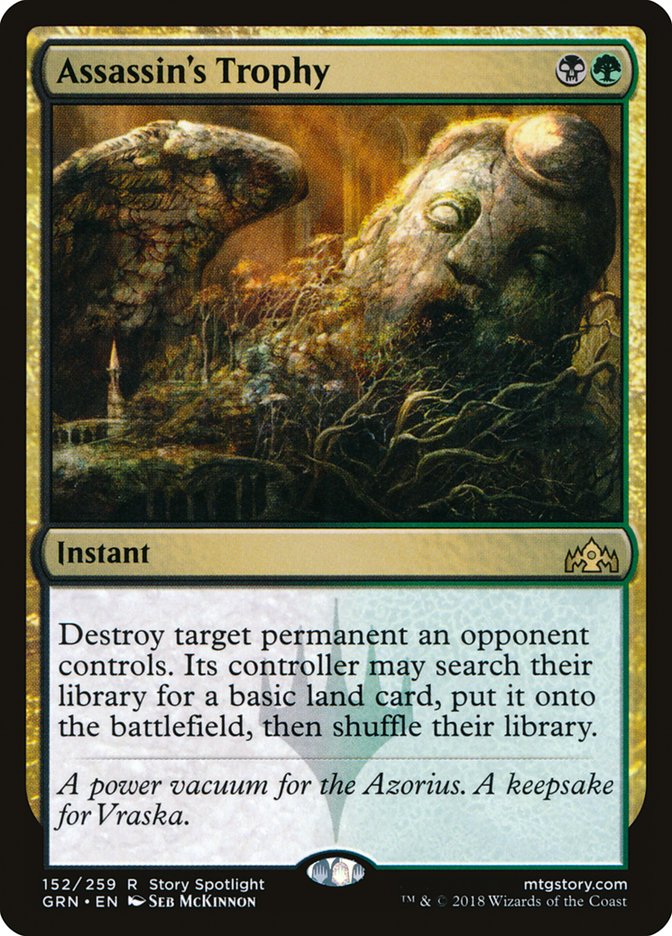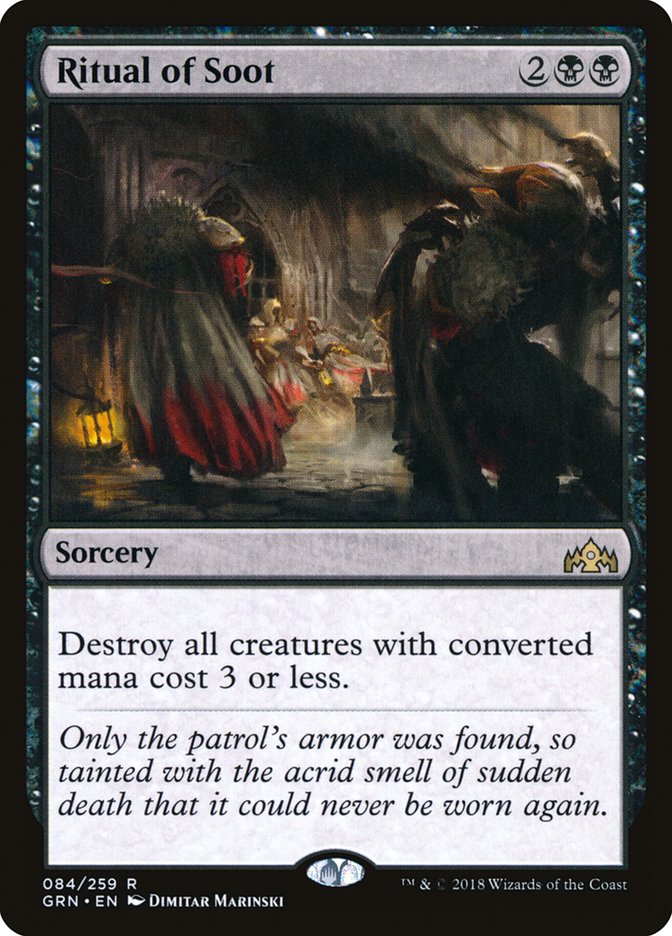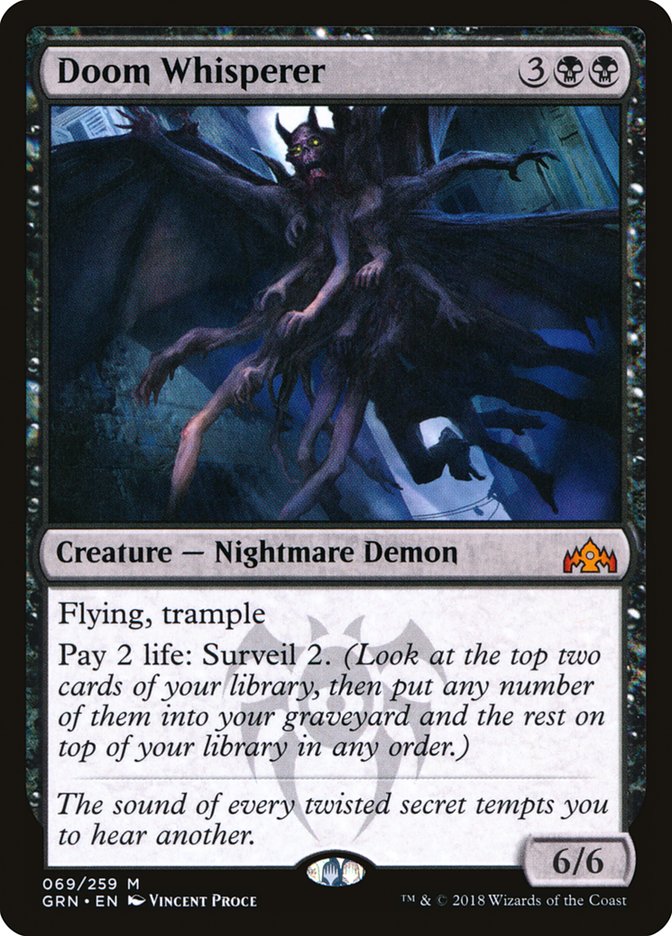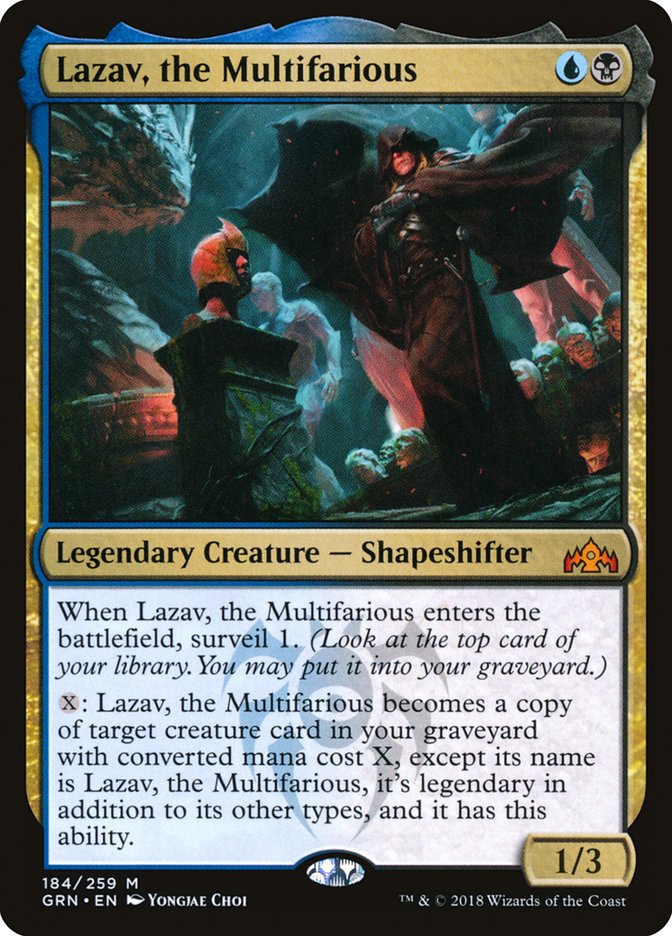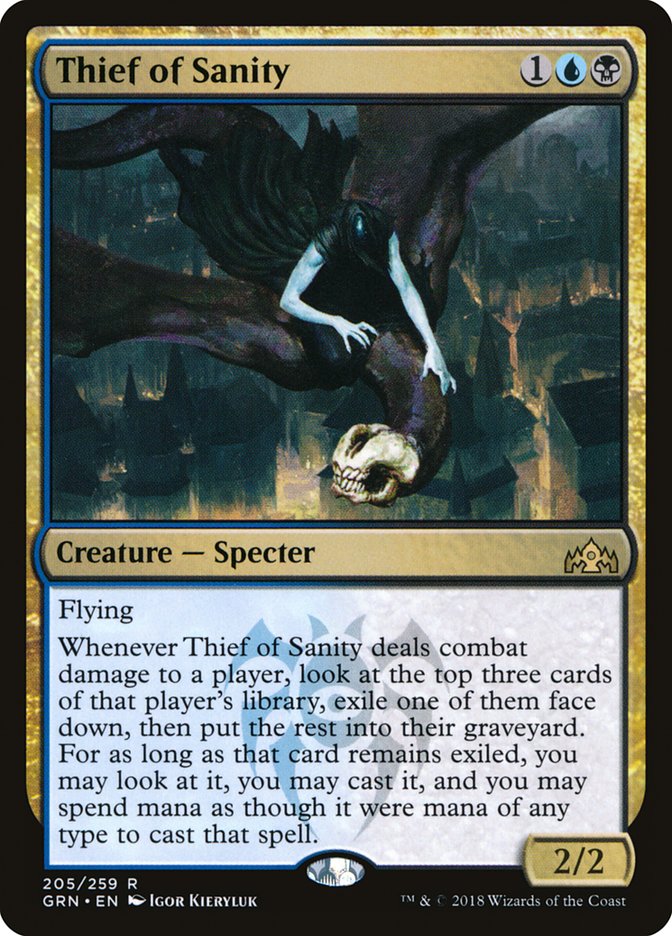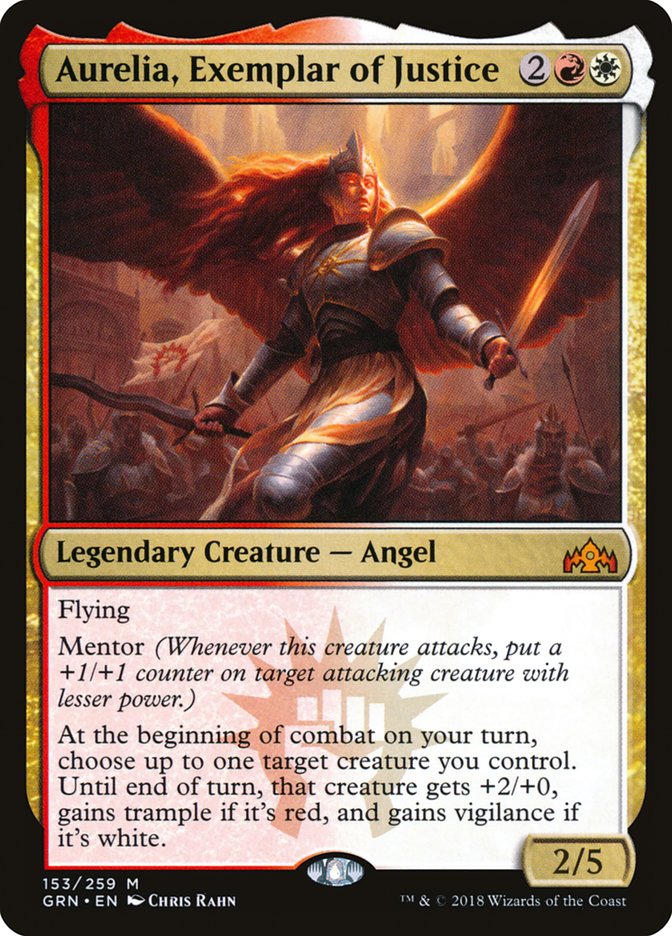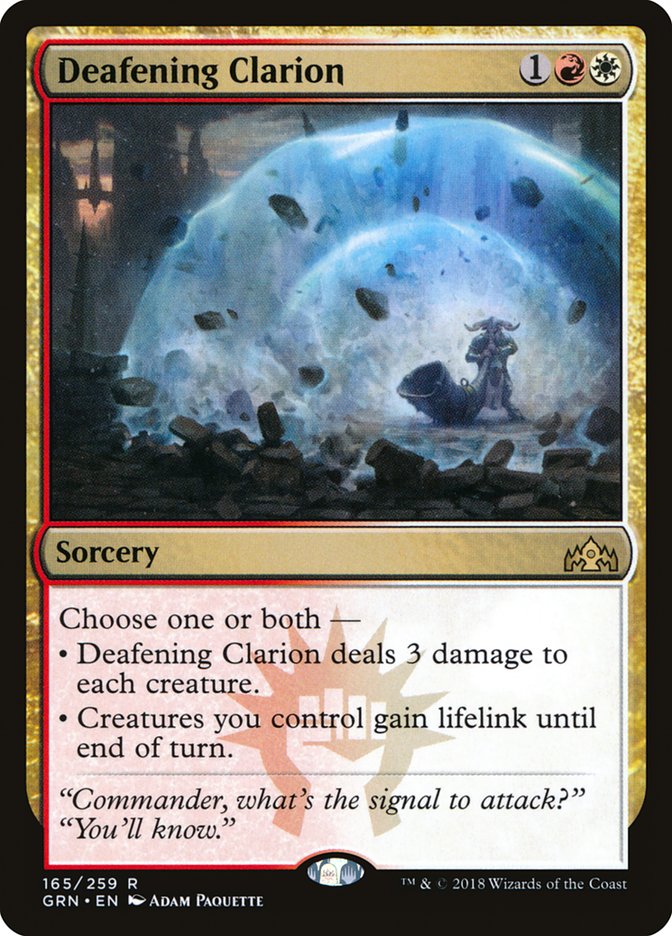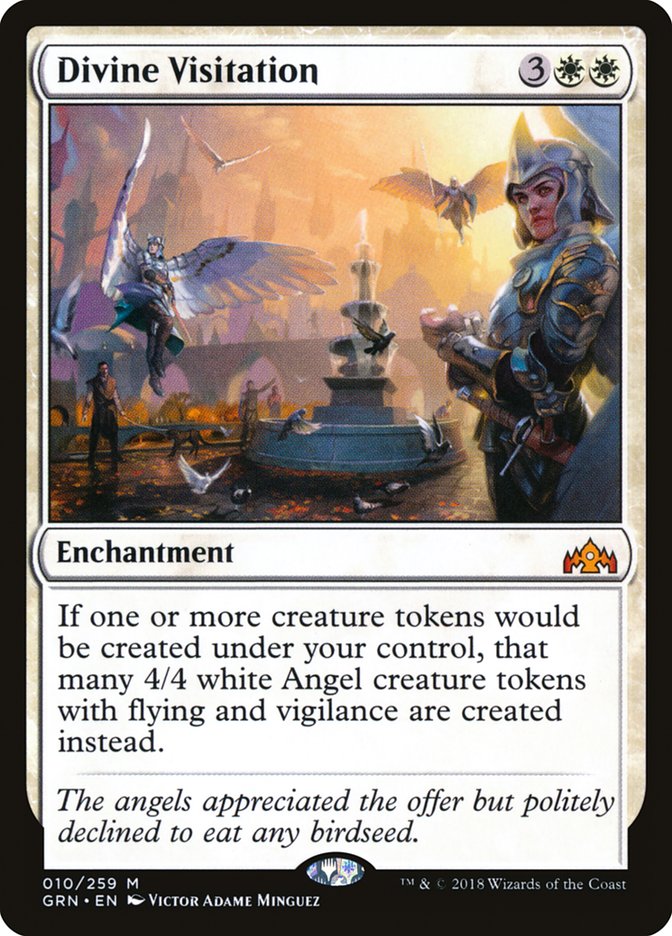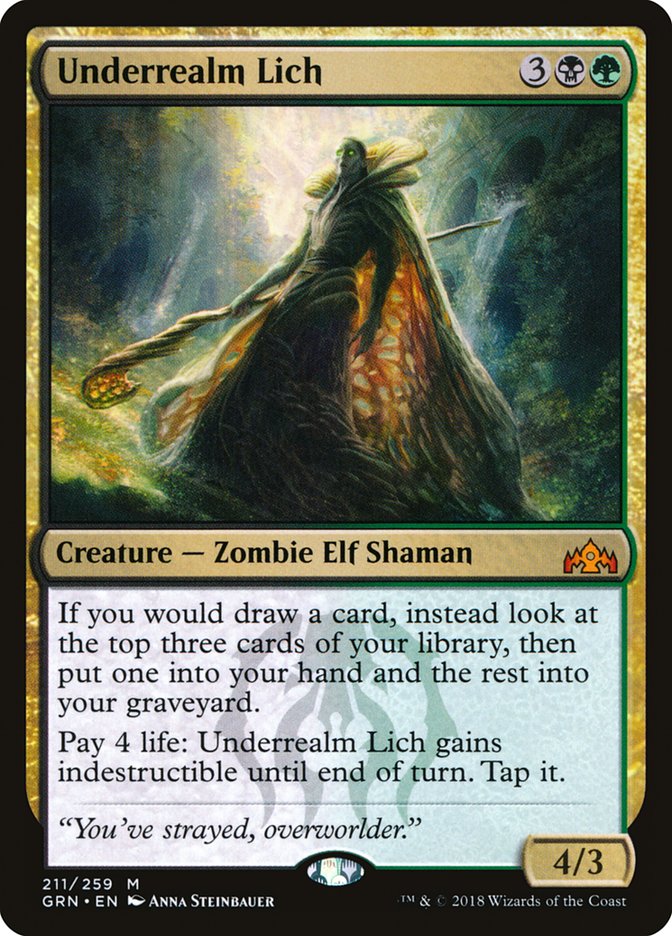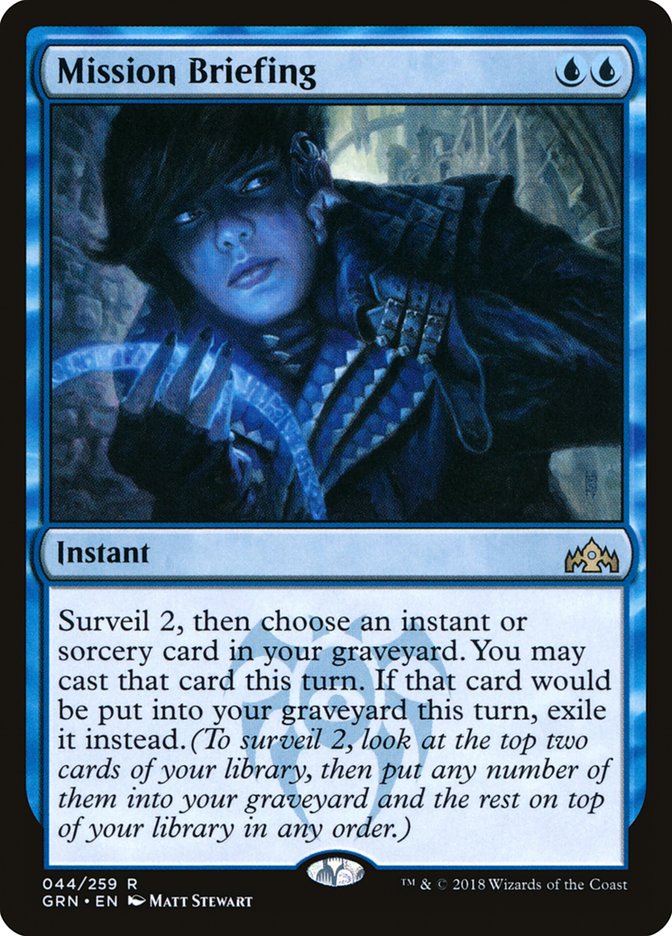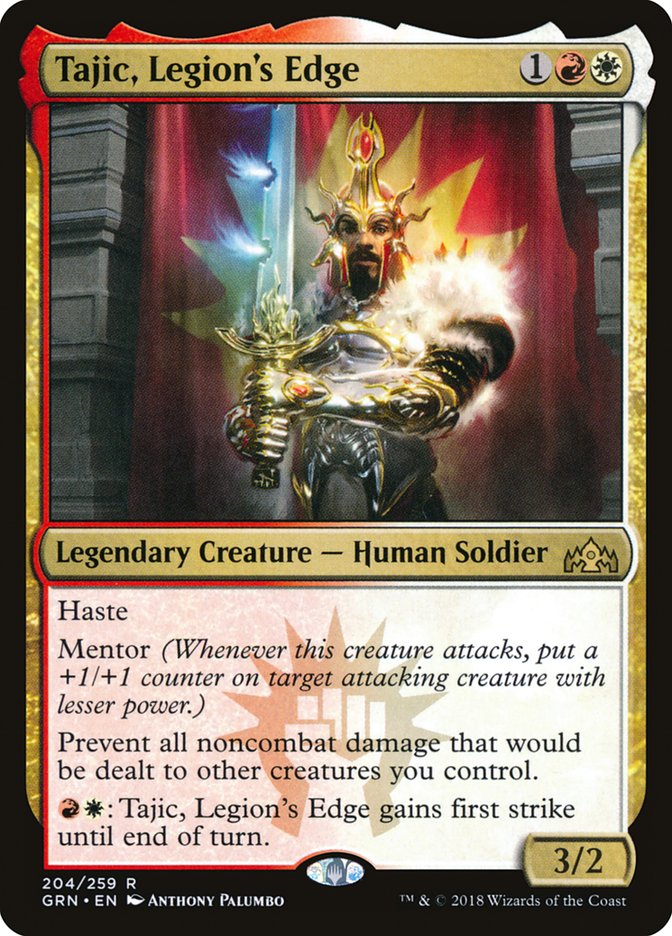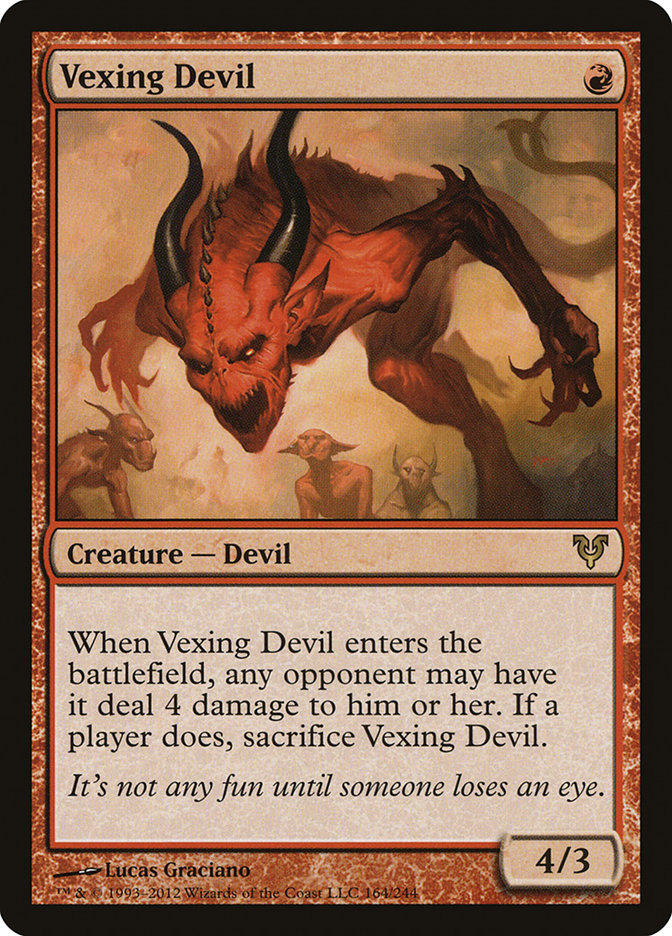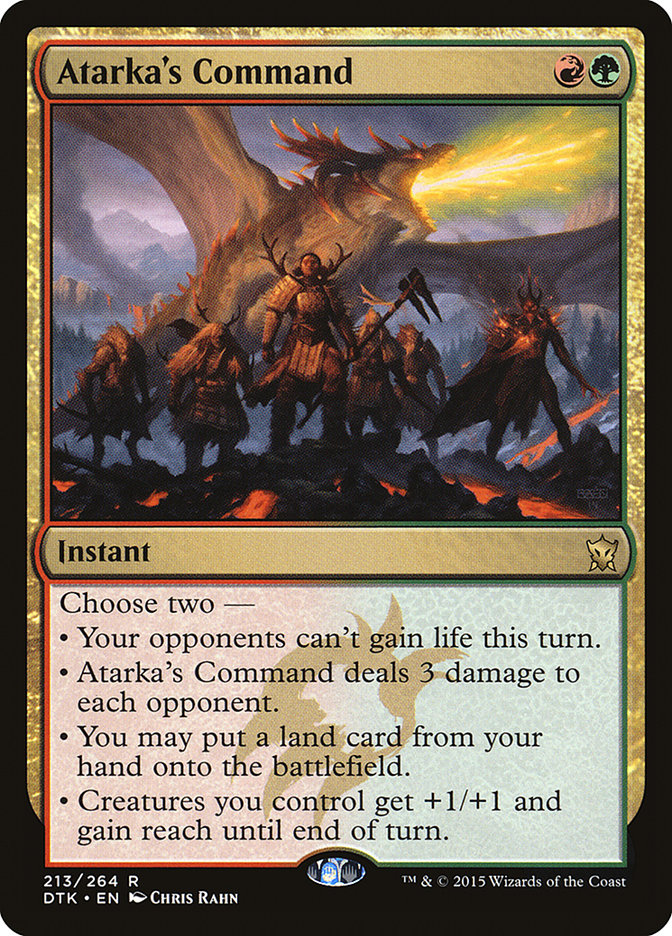Week 1 of Guilds of Ravnica Standard is in the books, and it’s time to take a deep financial dive into the new metagame. Not only do we have the results from the Team Constructed Open in Columbus, but we’ve got our first smattering of Magic Online decklists as well. While writers like Gerry Thompson and Todd Anderson did a great job predicting this Week 1 metagame, there’s nothing like good old-fashioned tournament results to really put everything into perspective.
A few evergreen caveats before we dive in:
First, the Standard metagame on Week 1 of a new format is likely going to be quite different from the metagame on Week 6. My go-to example is Emrakul, the Promised End, which was a no-show for several weeks after Eldritch Moon was released before eventually proving good enough to be banned in Standard.
On the other hand, the two most popular decks on Week 1 of the brand new Ixalan metagame last year were Ramunap Red and Four-Color Energy, which ended up being the two best decks for quite some time. While this is unlikely to happen this time around, there are years, especially when a new set is underpowered, when the format is solved almost immediately.
Second, aggro is always going to be well-positioned early on. Since control decks are by their nature reactive, it’s hard to build an effective control deck on Week 1 of a new format since you’re not sure what you have to react to yet. Also, aggro decks tend to be at a higher power level when the overall card pool is smaller—and right now, we’ve lost four sets while gaining just one. So not only are aggro decks more powerful on Week 1 of a new format, they’re especially powerful on Week 1 of a new format after a major set rotation.
I feel like we can boil all of this down into a couple of useful heuristics:
1. If there’s a good aggro deck on Week 1, it’s probably going to remain at least somewhat good going forward. But if the new Standard format is going to be fun and balanced at all, midrange and control decks will come up with ways to effectively fight back. Don’t expect these hot new decks to retain an overwhelming share of the metagame going forward, but don’t expect them to be hated out of the top tier, either.
2. If a hyped aggro strategy ends up disappointing on Week 1, this is bad news for that strategy going forward. Week 1 is when these cards are supposed to shine. If it’s not working now, when will it ever happen?
3. If a hyped control strategy ends up disappointing on Week 1, don’t despair. While the dustbin of Magic history is littered with exciting control cards that never ended up panning out, there’s still a reasonable chance that these cards will find their home over the coming weeks. Often, these decks just need time to develop.
When a deck breaks out, all its key rares and mythics instantly double or triple in price. Meanwhile, all the cards that no-showed haven’t really begun dropping yet. The result is a massively inflated Standard market where there are loads of rares in the $5-$10 range and multiple $20+ mythics.
How should you handle this? Well, the safest thing to do is to sell or trade away every single Guilds of Ravnica card that you aren’t planning to use right now. This advice isn’t very practical for most competitive players, though, and it really doesn’t help if you’re looking to buy into a hot new deck like Selesnya Tokens or Boros Angels.
If you’re an active player, then, the best thing you can do is approach these purchases with the understanding that almost every Guilds of Ravnica card is going to drop in price as more packs are opened. That doesn’t mean buying in is bad – who really cares if a card drops from $8 to $4 if you’re going to get several years of use out of it? – but it does mean that you should more or less stick to buying cards that you’re planning to use.
I’m going to extol the virtues of several scorching hot Guilds of Ravnica cards this week, cards that I expect will remain format staples for as long as they’re Standard-legal. This doesn’t mean that they’re good spec buys at this point, though. The time to buy Runaway Steam-Kin on spec was back when it was $1.50, not now that it’s $8.
But there are also a few Guilds cards that are still in the $2-$3 range and feel like they’re on the cusp of breaking out. So, if you read these articles for some sweet spec targets, don’t worry – I’ve got some juicy picks for you later in this piece.
With all of that in mind, let’s look at the decks that are – and aren’t – making a splash in Guilds of Ravnica Standard right now.
Mono-Red Aggro
Creatures (20)
- 4 Fanatical Firebrand
- 4 Ghitu Lavarunner
- 4 Goblin Chainwhirler
- 4 Viashino Pyromancer
- 4 Runaway Steam-Kin
Lands (22)
- 22 Mountain
Spells (18)
Sideboard

Meet the new boss, kinda similar to the old boss. Mono-Red Aggro was the most-played Standard deck on Day 2 of SCG Columbus, and if you’re going to brew up a Guilds of Ravnica Standard deck, you’re going to have to find a way to beat this thing.
Mono-Red Aggro lost almost everything when Kaladesh and Amonkhet rotated, but Guilds of Ravnica gave the deck enough goodies to reinvent itself as more of a spell-based brew. The result is a deck that’s not as good as the last iteration of Mono-Red but is somehow still the best deck in the format right now. Gosh, it sure does seem like this strategy is top-tier in every Standard season these days, doesn’t it?
Key Guilds of Ravnica cards:
If there’s one thing we learned this weekend, it’s that Runaway Steam-Kin and Experimental Frenzy are outstanding Magic cards. Runaway Steam-Kin looked like the best card on the battlefield in several matchups, and it should end up being a four-of staple in every aggressive red deck for as long as it’s legal.
Its current retail price of $8 is a bit high for a rare in a set that’s going to be opened as much as Guilds of Ravnica, but I can’t see it dropping much below $5. Ditto for Experimental Frenzy, currently $7, which has also proven itself beyond my doubts. Both cards will continue to be top-tier Standard playables.
Risk Factor, currently $8, gets my stamp of approval as well. I was high on this card from the start, and the Jump-start ability really puts it over the top. I feel like it’ll start seeing more play once the haters of the punisher mechanic jump on board (there are a lot of skeptics out there, and I get it—most punisher cards are awful). Heck, I wouldn’t be surprised if Risk Factor becomes a fringe player in Modern as well.
Legion Warboss, meanwhile, had a disappointing weekend. Oh, sure, Ben Ragan ran a pair of them in his sideboard and several other Red and Boros Aggro players had them in their maindeck, but early testing seems to indicate that this card is underperforming expectations. At a current retail of $7, I’d want this card to be a slam-dunk maindeck four-of in this deck. Legion Warboss is not that. I’m selling.
Selesnya Tokens
Creatures (19)
- 4 Benalish Marshal
- 4 Shanna, Sisay's Legacy
- 3 Emmara, Soul of the Accord
- 4 Venerated Loxodon
- 4 Hunted Witness
Lands (23)
Spells (18)

If you’re looking for a clear winner among the five guilds from Guilds of Ravnica, Selesnya is it. It was the second-most-popular Standard deck on Day 2 in Columbus, though it was a lot closer to the scrum of one-ofs and two-ofs than it was to Mono-Red Aggro, which placed nine (!) copies into Day 2.
Regardless, Selesnya looks like the best all-new deck right now. I’ve included Gerry Thompson’s test build here for reference, but it’s worth noting that many of the better Selesnya decks in Columbus ran four copies of Thorn Lieutenant in the maindeck instead.
Key Guilds of Ravnica cards:
All these cards should continue seeing play going forward, though they’re very much limited to this single deck. I can’t imagine March of the Multitudes or Emmara showing up in any other brew, which means that their price tags will remain tied to the overall performance of Selesnya Tokens in a way that a card like Runaway Steam-Kin doesn’t have to worry about.
The good news, though, is that all these cards are still reasonably priced. March of the Multitudes is $15 (cheap for a Tier 1 mythic), Venerated Loxodon is $3, Emmara is $2, and Dawn of Hope is just $1. Knight of Autumn is the only really pricey card here at $7, and that’s because the card sees play in Modern as well.
While buying into this deck right now is a tad risky – if the format becomes too sweeper-heavy, Selesnya Tokens might end up faltering – this is a pretty affordable deck considering how new and exciting it is. Honestly, it’s probably the new deck that I’m most likely to buy into myself this week.
Golgari Midrange
Creatures (21)
- 4 Llanowar Elves
- 4 Merfolk Branchwalker
- 4 Jadelight Ranger
- 3 Ravenous Chupacabra
- 1 District Guide
- 3 Golgari Findbroker
- 2 Plaguecrafter
Planeswalkers (7)
Lands (24)
Spells (8)

From here on out, I’m going to highlight some of my favorite decks from the Top 8 of a 322-person Standard PTQ that ran on Magic Online over the weekend. While the SCG Columbus results are significant (and Golgari was the third-most-played Standard deck on Day 2), remember that it was a Team Constructed Open. This MTGO PTQ was purely a Standard event, which means that its results might be slightly more predictive of the new metagame.
Also, some of these decks are very cool.
Take Yamakiller’s first-place Golgari Midrange deck, for example. Six maindeck Vraskas? Oh man. I can’t write too much about this deck since I wasn’t able to see it in action, but I’m excited to see if it ends up being as good as it looks.
Key Guilds of Ravnica cards:
Before these MTGO results came out, I was ready to call Golgari something of a Week 1 bust. There was a lot of Golgari hype running around online before the weekend, but it didn’t really show up at the top tables in Columbus (in coverage, at least) until the middle of Day 2.
Unlike Selesnya Tokens, where I feel like the best version of deck is reasonably settled, I have no idea what the best version of Golgari Midrange will end up looking like. First, is Assassin’s Trophy actually good? It certainly is in Modern, but there simply aren’t that many great targets in Standard right now and it’s possible that the most-hyped card in Guilds of Ravnica ends up moving out of the maindeck of these Golgari Midrange decks at some point. The card’s price has already begun to drop – it’s down to just $30 now – and I still suspect it’ll end up settling in around $12.
I also don’t know what the top end of this deck is going to end up looking like once the dust has settled. Yamakiller went with the “six Vraska” plan, while Cody Murray decided to run Doom Whisperer as his curve-topper at SCG Columbus. Yamakiller’s deck also lacked Find // Finality, which also looked pretty good out of Cody Murray’s deck. I feel like this deck will absolutely end up being a major part of the metagame going forward, but we simply don’t have enough data yet to know how the prices will shake out.
Esper Control
Creatures (1)
Planeswalkers (4)
Lands (27)
Spells (28)

The two best cards in Standard before rotation? Goblin Chainwhirler and Teferi, Hero of Dominaria. The two best cards in Standard after rotation? They might still just be Goblin Chainwhirler and Teferi, Hero of Dominaria. I’m still not sure whether Esper Control will prove to be the best Teferi shell going forward – Azorius or Jeskai Control may end up beating it out at some point – but for now, this looks like the preferred way to get the powerful planeswalker onto the battlefield.
Key Guilds of Ravnica cards:
Esper Control is actually a cheap deck to build as long as you already have your playsets of the key control cards from last season, like Teferi, Search for Azcanta and Vraska’s Contempt. Ritual of Soot is the only new Guilds of Ravnica rare (save Watery Grave), and it hasn’t seen any financial movement yet: you can still pick these up for just $2.50. If you’re a control mage, you should probably snap up a set of these ASAP. As control takes off, I can see this card end up around $5-$6.
Grixis Midrange
Creatures (13)
- 1 Ravenous Chupacabra
- 3 Nicol Bolas, the Ravager
- 3 Doom Whisperer
- 2 Lazav, the Multifarious
- 4 Thief of Sanity
Lands (26)
Spells (21)

This was the second-place deck in the MTGO PTQ, and it’s another really exciting brew. Doom Whisperer! Lazav, the Multifarious! Nicol Bolas, the Ravager! Thief of Sanity! This is essentially a Dimir deck that splashes red for Nicol Bolas, the Ravager and a singleton Ral, Izzet Viceroy out of the sideboard.
While I’m highlighting Grixis Midrange here, I could just as easily talk about Dimir Control or Sultai Control, both of which play out fairly similarly. These decks run a bunch of blue and black spells from Guilds of Ravnica alongside creatures like Doom Whisperer and Thief of Sanity.
Key Guilds of Ravnica cards:
At this point, I feel fairly confident that Doom Whisperer will find a home somewhere. It’s currently the most expensive mythic in Guilds of Ravnica, and that should continue to hold true for the foreseeable future. If it ends up being a three-of or four-of in multiple decks – Golgari and Grixis Midrange, say – we’d be looking at a $30+ card. Current retail is just $23, which means that there’s still some room to run here. The more the format skews toward midrange, the better the chance that this card will find time to shine and the higher the price will go.
I’m of two minds on Thief of Sanity, which is just $3. On the one hand, this was kind of a dark horse breakout card this weekend – it showed up as a four-of in multiple good Dimir-centric decks that seem likely to end up finding a way to the top of the metagame at some point. On the other hand, this card is a 2/2 for three mana in a world where Mono-Red Aggro is the best deck and Dimir is going to want to run sweepers to deal with Selesnya Tokens. It’s likely that the Thief ends up in sideboards for now, but it could see a major maindeck breakout somewhere down the line if the metagame shifts more toward midrange and control.
Lastly, there’s Lazav. He hasn’t been as common in all the Dimir-based decks I’ve seen, so I can’t really call him a buy at its current retail price of $10. That may change once we get a sense of which Dimir-based deck ends up congealing and breaking through, but it’s too early to make that call yet.
Boros Angels
Creatures (22)
- 4 Adanto Vanguard
- 4 Knight of Grace
- 4 Lyra Dawnbringer
- 3 Shalai, Voice of Plenty
- 4 Resplendent Angel
- 3 Aurelia, Exemplar of Justice
Lands (25)
Spells (13)

While Boros Aggro was one of the biggest no-shows of the weekend, Boros Angels looked pretty good on camera at SCG Columbus and in the big MTGO PTQ. This is much more of a midrange deck than I expected the best Boros deck to be, featuring heavy hitters like Lyra Dawnbringer and Shalai, Voice of Plenty alongside four copies of Aurelia, Exemplar of Justice.
Key Guilds of Ravnica cards:
First off, it’s worth noting that this deck doesn’t actually run the hyped-up Boros aggro cards like Tajic, Legion’s Edge, Legion Warboss, or Swiftblade Vindicator. While it’s still possible that Boros Aggro becomes a thing, I’m deeply skeptical at this point. Mono-Red Aggro simply looks like the better deck, and I’d sell my Boros Aggro pieces ASAP. As we discussed at the top of the article, if not now, when?
Aurelia has shown up to play, though, and she looks to be one of the key cards in Boros Angels. Her current retail price of $18 seems about right for a brand-new mythic that looks great in a single deck, and I’d expect her to remain between $12 and $20 going forward.
Deafening Clarion, currently selling for $2.50, seems like it’ll remain a solid role-player going forward. It’s quite good against the format’s best aggro decks right now, and the lifelink can help win a midrange race in a pinch. I don’t see a ton of financial upside here, but Deafening Clarion should be a solid $2-$3 card with a chance to peak at $6-$7 if everything breaks right.
Boros Dragons
Creatures (19)
- 4 Rekindling Phoenix
- 4 Goblin Chainwhirler
- 2 Verix Bladewing
- 1 Lathliss, Dragon Queen
- 4 Demanding Dragon
- 4 Runaway Steam-Kin
Planeswalkers (3)
Lands (25)
Spells (13)
Sideboard

Let’s finish off this article by looking at one of the dark horse contenders for the new format, Boros Dragons. While zero copies of this deck made it to Day 2 in Columbus, MTGO player Fellepastier did pilot a copy into the Top 8 on MTGO.
Now, it’s possible that this finish was only possible because Demanding Dragon was bugged during the event, forcing anyone playing against the card to sacrifice a creature instead of getting the choice to take five damage. Because of that, I’m deeply, deeply skeptical of this result. The deck is very cool, though, and it’s possible that plenty of people simply decided not to test it this week because of the Demanding Dragon bug. Here’s hoping it finds a home in the format at some point!
Key Guilds of Ravnica cards:
Not much to talk about here, as Boros Dragons mostly runs older cards like Sarkhan, Fireblood and Rekindling Phoenix alongside massive Dragons like Lathliss, Dragon Queen and Verix Bladewing. I guess you can just consider this another endorsement for Runaway Steam-Kin, one of the most impressive cards in the format so far.
Final Thoughts on Week 1 Finance
Now that the dust has settled, I can say with confidence that this has been one of the most interesting and impressive Week 1s of a new format that I can remember. At first glance, it’s kind of a bummer that Mono-Red Aggro is the best deck in the format again. The deeper you go, though, the more clear it becomes that Standard is absolutely wide open.
Consider the fact that almost every exciting card from Guilds of Ravnica actually showed up over the weekend. That’s unheard of! Usually, only a tiny handful of cards from a cool new set end up making an impact. But we’ve got Selesnya Tokens, Boros Angels, Golgari Midrange, and several Dimir-based midrange and control strategies. Even the Izzet were in attendance, with Mono-Red Aggro using a bunch of interesting Izzet cards and several more dedicated Izzet decks showing up on the virtual top tables in the MTGO PTQ and a little further down the line at SCG Columbus.
I usually end these articles with a list of key cards that no-showed Week 1, but it was hard to find them this time around. Nullhide Ferox? It was in some interesting Mono-Green Aggro decks that I didn’t talk about much but could absolutely end up being a key part of the new metagame. Ditto for Pelt Collector. Even Dream Eater showed up in a couple of sideboards.
The biggest no-shows, so far, are the following cards:
That’s not a bad list! Others will undoubtedly join them – cards like Lazav, the Multifarious and Vraska, Golgari Queen may end up being sleeper hits or busts, depending on how things shake out – but for now, it looks like the new Standard environment is going to be awesome. I can’t wait to see how things shake out, and I feel confident in doubling down on my prediction that Guilds of Ravnica Standard will be the best Standard format since Khans of Tarkir and that prices will remain higher than average due to increased demand.
This Week’s Trends
- Guilds of Ravnica: Mythic Edition was finally available for pre-order on the Hasbro toy shop this week, and the results were…unfortunate. A lot of people placed their orders online, got to the confirmation page, and then realized later on that they never received a confirmation email. Other unlucky buyers didn’t even make it as far as the confirmation page and had no idea if their order went through or not. Hasbro customer support started calling folks the following day, telling them that their orders weren’t actually put through and offering to do it manually. Then WotC ran out of sets, and many people who thought they had their Mythic Editions in the bag were left with nothing.
- I was low on this set coming into the week because it took so long for the Grand Prix copies to sell out, but the Hasbro Toy Shop boondoggle proved that there’s a lot of actual demand for Mythic Edition. Complete sets are selling on eBay for $550-$600 right now as frustrated collectors who missed out on the Toy Shop copies are securing their borderless planeswalkers. If you bought one of these to flip, I suggest either doing so ASAP or holding onto it for at least a year. Sets like this sell best when they’re front and center in the community consciousness, and as soon as we move on to the next big thing, the price will drop until the available supply begins to dry up somewhat.
- While most of the world was focused on Standard this week, there was one interesting spike in Modern this week: Vexing Devil. There was a fun new Zoo deck kicking around on MTGO this week that paired Vexing Devil with Pelt Collector to great effect. I’m not sure if this deck is actually good, but I do know the card I want to spec on if it is: Atarka’s Command. Copies of this powerful card are just $3.50 right now, and the deck runs four of them. If Pelt Collector Zoo ends up placing at a major event, Atarka’s Command will break $10 easily.
- Walking Ballista was also up this week, jumping from $15 to just over $20. My guess on this one is that a lot of Modern players were holding off on buying these until the price went down at set rotation, only to find out that there just weren’t many deals available. “Walking Ballista will eventually be $20+” was one of the worst-kept secrets in Magic finance, so it probably shouldn’t be a surprise that it happened sooner rather than later. I’m not sure it’ll ever drop too far below $20 at this point.
- Lastly, be sure to check your local game store for extra Guilds of Ravnica Prerelease kits. They’re not all worth more than retail, but I can’t find a Golgari one for less than $50 right now. It seems like people really want to play the foil Assassin’s Trophy lottery. These aren’t lucrative enough for me to buy infinite of them on sight, but if you like to gamble…why not?



